Two Escape Mechanisms of Influenza A Virus to a Broadly Neutralizing Stalk-Binding Antibody
- PMID: 27351973
- PMCID: PMC4924800
- DOI: 10.1371/journal.ppat.1005702
Two Escape Mechanisms of Influenza A Virus to a Broadly Neutralizing Stalk-Binding Antibody
Abstract
Broadly neutralizing antibodies targeting the stalk region of influenza A virus (IAV) hemagglutinin (HA) are effective in blocking virus infection both in vitro and in vivo. The highly conserved epitopes recognized by these antibodies are critical for the membrane fusion function of HA and therefore less likely to be permissive for virus mutational escape. Here we report three resistant viruses of the A/Perth/16/2009 strain that were selected in the presence of a broadly neutralizing stalk-binding antibody. The three resistant viruses harbor three different mutations in the HA stalk: (1) Gln387Lys; (2) Asp391Tyr; (3) Asp391Gly. The Gln387Lys mutation completely abolishes binding of the antibody to the HA stalk epitope. The other two mutations, Asp391Tyr and Asp391Gly, do not affect antibody binding at neutral pH and only slightly reduce binding at low pH. Interestingly, they enhance the fusion ability of the HA, representing a novel mechanism that allows productive membrane fusion even in the presence of antibody and hence virus escape from antibody neutralization. Therefore, these mutations illustrate two different resistance mechanisms used by IAV to escape broadly neutralizing stalk-binding antibodies. Compared to the wild type virus, the resistant viruses release fewer progeny viral particles during replication and are more sensitive to Tamiflu, suggesting reduced viral fitness.
Conflict of interest statement
I have read the journal's policy and the authors of this manuscript have the following competing interests: NC, MR, EL, AF, PL, and MWT are employees of Genentech; LRS is an employee of Achaogen. This does not alter our adherence to all PLoS Pathogens policies on sharing data and materials.
Figures

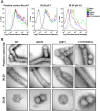
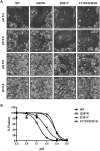
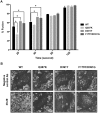

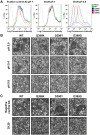


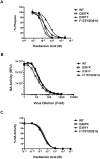
References
-
- Thompson WW, Shay DK, Weintraub E, Brammer L, Cox N, et al. (2003) Mortality associated with influenza and respiratory syncytial virus in the United States. JAMA 289: 179–186. - PubMed
-
- Thompson WW, Shay DK, Weintraub E, Brammer L, Bridges CB, et al. (2004) Influenza-associated hospitalizations in the United States. JAMA 292: 1333–1340. - PubMed
-
- Murray CJ, Lopez AD, Chin B, Feehan D, Hill KH (2006) Estimation of potential global pandemic influenza mortality on the basis of vital registry data from the 1918–20 pandemic: a quantitative analysis. Lancet 368: 2211–2218. - PubMed
-
- Pebody R, Warburton F, Ellis J, Andrews N, Thompson C, et al. (2015) Low effectiveness of seasonal influenza vaccine in preventing laboratory-confirmed influenza in primary care in the United Kingdom: 2014/15 mid-season results. Euro Surveill 20. - PubMed
MeSH terms
Substances
LinkOut - more resources
Full Text Sources
Other Literature Sources
Medical

